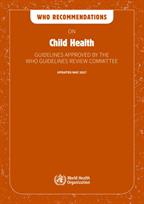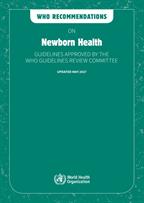
Module 2
Mainstreaming refugee and migrant health in the global, regional, and country agenda and access to inclusive people-centred health services
Tool 7: Maternal, newborn, child and adolescent health
Tool overview
The realization of human rights, particularly sexual and reproductive health and rights, remains seriously uneven in many countries, risking the reversal of hard-won advances in preventable maternal and child mortality and undermining the health of adolescents in particular. Discrimination, abuse and violence against women, children and adolescents – among the most widespread of human rights violations – continue to erode physical and mental health. The COVID-19 pandemic has exacerbated persistent inequities while also creating new ones. The actions taken to control the virus have disproportionately affected women and children and have had devastating impacts, including lower rates of immunization; reversals in learning outcomes due to school closures; surging reports of violence and abuse directed at girls and women; and increased poverty, hunger and food insecurity. Meanwhile, conflicts, migration, climate instability and ecological degradation are introducing new dangers and intensifying known impediments to the health of women, children and adolescents, placing each of these hard-won gains at great risk. The most vulnerable and marginalized include, among others, individuals and families of disadvantaged ethnic groups, those living in remote areas, those affected by conflict or other humanitarian disasters and those impacted by economic disadvantage. Many are forced to leave their homes and sometimes become refugees, migrants or internally displaced people; they often have limited access or rights to health and other services.
Women and children are particularly vulnerable in conflict situations. Millions of women and children who are internally displaced, refugees or migrants face an acute state of vulnerability. Maternal and child mortality rates are substantially higher in countries chronically affected by conflict: one in three children living outside their countries of birth are child refugees and 40% of the global deaths of children under 5 years of age occurred in fragile contexts in 2019. The under-5 mortality rate is three times higher in the 36 countries classified as fragile than in so-called non-fragile countries.
The Global Strategy for Women’s, Children’s and Adolescents’ Health (2016–2030) is a roadmap for ending all preventable maternal, newborn and child deaths, including stillbirths, by 2030, and improving their overall health and well-being.
Guidance and tools
Guidance, training, reports

WHO recommendations on maternal health: guidelines approved by the WHO Guidelines Review Committee
Please note that this publication has been updated and can be found at : https://app.magicapp.org/#/guideline/7000 – watch this page for a...

WHO recommendations on child health: guidelines approved by the WHO Guidelines Review Committee
This publication on WHO recommendations related to child health is one of four in a series; the others relate to newborn, maternal and adolescent health....

WHO recommendations on newborn health: guidelines approved by the WHO Guidelines Review Committee
Please note that this publication is being updated.This publication on WHO recommendations related to newborn health is one of four in a series; the others...
WHO recommendations on adolescent health: guidelines approved by the WHO guidelines review committee
This publication on WHO recommendations related to adolescent health is one of four in a series; the others relate to maternal, newborn and child health....
This document provides an overview of sexual and reproductive health and rights issues that may be important for the human rights, health and well-being...
Tools
Working with individuals, families and communities to improve maternal and newborn health
The purpose of this document is to establish a common vision and approach, as well as to identify the role of the WHO Making Pregnancy Safer initiative,...
Working with individuals, families and communities to improve maternal and newborn health
This toolkit was designed to support countries to integrate and operationalize key themes of empowerment and community engagement in maternal and newborn...
Maternal and perinatal death and surveillance and response
The purpose of the new WHO document “Maternal and Perinatal Death Surveillance and Response (MPDSR): materials to support implementation” is...
Strengthening midwifery toolkit
There have been serious efforts over the past several decades to review effective interventions for improving pregnancy and childbirth outcomes....
Additional resources
